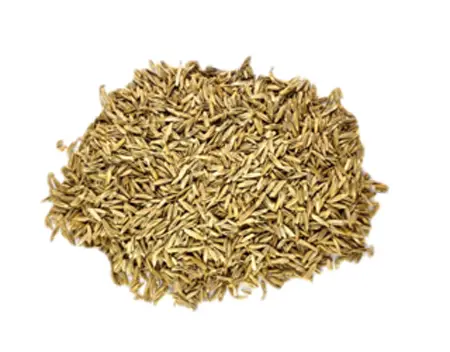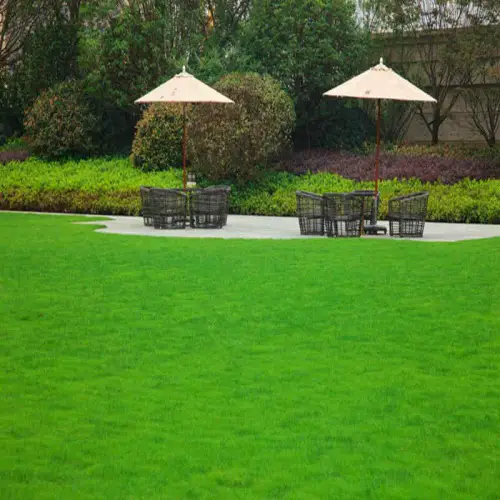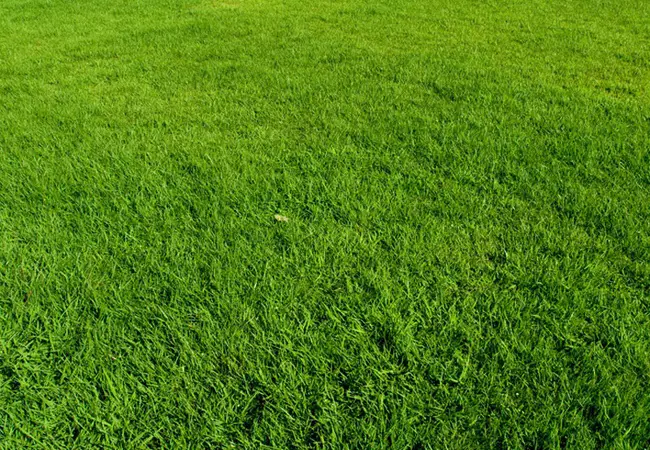If you’re looking for grass seeds that could withstand the heat and survive in scorching weather, then Bermuda grass seed is what you’re looking for. It is being used for lawns, golf courses, and most land that needs grass on them.
The Bermuda grass seed grows in over 100 countries all over the world. Bermuda grass grows to up to 5cm, and its roots are well-rooted under the soil, so they are pretty strong grass.
Bermuda grass is ideal for those looking for something low maintenance; once established, it provides year-round coverage without needing much attention or upkeep. , its deep green hue gives any yard an attractive edge over others while also being able to withstand extreme weather conditions like heat waves and droughts. Here is everything you need to know when it comes to planting Bermuda grass seed so you can start beautifying your backyard today!
Preparing The Soil
Before planting any grass seed, it is essential to prepare the soil. Proper preparation of the soil will ensure that your Bermuda grass grows healthy and has a secure early establishment. The initial step in preparing the soil for Bermuda grass seeding is to till the area. Till at least 4-6 inches deep with a rototiller or garden hoe. This process should break up clods and remove weeds, rocks, and other debris from the bedding area. After tilling, use a rake to level out the surface and collect large particles such as stones and sticks before they become buried.
You can use a roller machine over the topsoil once more after it has dried slightly but still remains moist enough for compaction purposes. Rolling ensures proper contact between seeds and soil without damaging root systems or causing air pockets which can lead to issues down the road when trying to establish these new plants in their environment.
Choosing The Right Seed
Now that the soil is prepared, it’s time to select an appropriate Bermuda grass seed. Alliteratively speaking, there are a plethora of possibilities when it comes to procuring proper seeds for your project. It is important to understand what kind of turf you need as different varieties have specific traits; some may be drought-resistant while others thrive in wetter climates. Some types can handle more foot traffic than others and certain ones require less mowing or maintenance overall. Therefore, researching beforehand will help ensure success down the line with this particular task.
When shopping for seeds, focus on quality over quantity; higher-grade products typically contain fewer weed seeds because they have been cleaned in advance before packaging and distribution. Furthermore, look out for certified varieties which have undergone rigorous testing from reputable organizations like The Turfgrass Producers International (TPI).
You may consider purchasing pre-mixed blends if you’re looking to save money but still want a robust mix of species that come ready to go without any hassle required by mixing them yourself at home. With these key points in mind, you’ll soon be well on your way toward understanding the seed rate needed for successful seeding!
Understanding The Seed Rate
It is important to understand what rate of seeding is necessary in order to achieve a successful outcome. This requires knowledge about how much grass seed should be spread over an area as well as other factors like soil type, environmental conditions, and desired turf density.
You need to pay attention to current regional guidelines when assessing the proper amount of seeds needed; this could include local ordinances regarding limits on fertilizer use or irrigation requirements. As such, it’s essential to research ahead of time so that you can accurately calculate a precise and effective seed rate.
When figuring out the right quantity, consider using online calculators which automate many calculations related to sowing grass seed. These tools are helpful because they provide estimates based on your specific measurements while taking into account climatic data from around the globe.
They often feature interactive charts with real-time information about temperature and precipitation rates across different regions of the world. With all these resources available at your fingertips, calculating the ideal seed rate will become second nature!
Applying Fertilizer
Having established the ideal seed rate, it is time to move on to applying fertilizer. Fertilizer plays an important role in helping grass establish itself and thrive in a given environment. Through careful application of the right kind of fertilizer, one can effectively support new growth while providing essential nutrients needed for healthy vegetation.
When selecting a fertilizer, look for products that include nitrogen as well as other micronutrients like phosphorus and potassium. These macronutrients are vital for ensuring the rapid germination of grass seeds as well as promoting overall turf health.
Always make sure to read labels carefully so you know exactly what you’re buying and how much should be used per area in order to prevent over-fertilization or underfeeding your lawns. Consider using organic fertilizers which often come with added benefits such as improved soil structure and increased water retention capacity.
Spreading The Seed
Having established the ideal fertilizer rate and selection, it is now time to move on to spreading the seeds. While this task may seem daunting at first, with a few simple steps one can effectively apply grass seed to their desired area while also taking into consideration variables such as wind speed and direction during broadcast seeding.
One potential objection here could be that it’s difficult or labor-intensive to spread evenly across an entire lawn – however, this needn’t be the case! With efficient products like handheld seeders available on the market, applying grass seed has never been easier.
Handheld seeders are designed with adjustable settings so you can accurately control how much of your chosen product is applied in each application. So regardless of whether you plan on overseeding (adding more seed) existing turf or establishing a new patch from scratch, these tools offer fast and reliable results every time.
Moreover, using professional-grade equipment such as automated spreaders allows for even distribution over large areas without having to worry about manual errors or uneven coverage – making them perfect for larger projects where precision matters most. to be convenient and effective when covering larger surfaces, these devices help save time and money by providing uniform dispersal of materials without any guesswork involved.
Mulching The Area
Mulching is an important part of planting Bermuda grass seed, as it helps to maintain soil moisture and temperature while preventing weed growth. It also creates a barrier between the soil and the seed, encouraging better germination rates for healthier and more vibrant turf.
There are several factors to consider when selecting mulch material for your project, including color, texture, size, particle weight, water retention capacity, and cost. It’s best to choose a product that can not only provide adequate insulation but also withstand wear and tear over time – organic materials like wood chips or pine needles can be great choices if you’re looking for something eco-friendly that won’t break down quickly in harsh weather conditions.
Once you’ve decided on your preferred mulch type, it’s critical to apply it with care, either with a broadcast spreader or by hand. When spreading manually, ensure even coverage across the area being seeded – too much mulch in one spot can smother young grass shoots before they have had a chance to take root properly! For larger projects where uniformity is key, using an automated spreader can help achieve this goal without any guesswork involved.
Watering The Area
Watering the newly planted Bermuda grass seed is an essential component of successful sowing. It helps to kickstart germination and encourages fast, healthy growth within the turf. As such, it is important to ensure that the area being seeded receives a regular supply of moisture for several weeks after planting.
The best way to water your lawn is with a sprinkler system; this allows you to evenly distribute the required amount of liquid across the entire surface without any guesswork involved. Sprinklers can also be programmed at specific times throughout each day so that consistent hydration is maintained – this will help to promote strong root development in young plants as well as prevent weed intrusion into pre-germinated areas.
If you don’t have access to a sprinkler system or are unable to install one due to budget constraints, then manual watering with a hosepipe may suffice instead. This method should still provide sufficient hydration but requires more effort on your part as there is no automation available here – make sure not to overwater though! Regularly checking soil moisture levels will help you gauge when further irrigation is necessary.
Keeping The Area Free From Weeds
Keeping the newly planted Bermuda grass seed free from weed intrusion is an important step in ensuring a healthy and successful lawn. Weeds can quickly take over turf areas, reducing the quality of the overall appearance while causing problems such as competition for nutrients and water. Implementing preventative measures at this early stage will help guarantee your lawn’s long-term success.
The most effective way to do so is by applying pre-emergent herbicides several weeks before planting the seeds – these act as barriers against unwanted germination while simultaneously allowing desirable species to grow unhindered. Post-emergent products should be applied if any weeds have already developed; these work by killing existing plants without affecting other vegetation around them.
Regular mowing of the area also helps keep weeds at bay; taller grasses are able to outcompete their smaller counterparts due to increased light exposure, meaning fewer resources are available for undesirable growth.
Evaluating The Soil’s Ph
Bermuda grass seed requires a soil pH of 6.0 to 7.5 in order to germinate and grow successfully; any lower than this can lead to nutrient deficiencies that stunt growth or cause discoloration, while higher readings will prevent the seeds from sprouting at all. Therefore, it’s essential to test the soil prior to planting the Bermuda grass seed so you know what amendments need making if required.
The best way to do this is by purchasing an inexpensive pH testing kit that comes with everything needed for accurate results – these are available online or from most garden centers. Once you have your kit, simply follow the instructions provided and use the included dropper bottle of reagent solution on a sample soil taken from several areas around where you plan on planting the seed; wait three minutes before comparing your results against those on the color chart supplied.
If necessary, add either lime (for acidic soils) or sulfur (for alkaline soils) until desired levels are reached – keep in mind though that it can take some time before these amendments become effective, therefore they should be applied well ahead of when sowing takes place.
Planting At The Right Time Of Year
Planting Bermuda grass seed at the right time of year is essential for successful growth. In general, it is best to sow in the spring and summer when temperatures are warmer and there is plenty of moisture in the soil, allowing the seeds to germinate quickly and providing a healthy environment for their development. Some gardeners, however, may prefer to wait until fall when conditions are more stable; however, this does mean that mowing should be postponed until all danger of frost has passed.
No matter what season you decide on sowing your seeds, make sure they’re planted ½ inch deep into well-prepared soil (ensuring any large clumps have been broken up) which has already been watered thoroughly beforehand. This helps keep them close enough to the surface where they can easily absorb warmth from sunlight while also providing just enough protection against drying winds or too much direct heat. It’s also important not to overwork the area as this could lead to compaction which stops oxygen from reaching the roots, so light raking should suffice.
Once planted however, don’t expect immediate results; depending on temperature and other environmental factors such as humidity, it can take anywhere from 7 days up to 2 weeks before your Bermuda grass seed begins sprouting.
Mowing The Seedlings
As the days pass, and temperatures remain warm, the Bermuda grass seedlings will begin to appear. While this sight is certainly a welcome one, it’s important not to become complacent; regular mowing is still necessary in order to keep them at bay. To prevent overgrowth without damaging delicate roots, start with a low-cut blade setting – just enough so that there are no long stems or clippings left behind. As your lawn begins to fill out more evenly, you can switch up the height of the cutting blades depending on how quickly you want results.
Whatever you do though, avoid scalping or removing too much top growth as this could harm both root development and photosynthesis capabilities which affect future sustainability – making sure only an appropriate amount of material is removed each time should suffice. Make sure to sharpen the blades regularly (preferably after every use) as dull blades lead to ragged edges which leave open wounds for diseases and pests to get into.
Aerating The Soil
Aerating the soil is a crucial part of Bermuda grass seed planting and care. Aeration allows oxygen, water, and other nutrient-rich materials to reach deeper into the root zone which improves overall health, reduces stress on the plant, and increases their ability to ward off weeds. In order to aerate your lawn properly, you’ll need an aerator with spikes or tines that penetrate through the turf surface – this can be either manual or motorized depending on your preference.
Once you have an appropriately sized device for your yard size, begin by dividing it up into several sections then make sure to overlap each pass as you go along. Be careful not to pull out too much though – only enough material should be removed so that there are small holes throughout but never deep tunnels. Refrain from aggressive movements such as pounding or stomping down as these can actually cause more harm than good resulting in compaction instead of proper aeration.
When done correctly, aerating will create optimal conditions for both healthy growth and lush greenery; making sure to repeat this process every few months during active growing seasons will ensure sustained performance over time.
Monitoring The Progress
Monitoring the progress of your Bermuda grass seed planting is an essential step in order to ensure success. As a result, a few key indicators should be monitored on a regular basis throughout its growth cycle. To begin, look for signs of germination, which can take anywhere from 5 to 10 days and is characterized by small shoots poking up through the soil.
Early weed infestations, if left unchecked, will compete with newly planted grass and stunt its development; performing a careful visual inspection every week or two (depending on weather conditions) will help catch any potential problems before they become more serious. Here’s a quick rundown of what you should look out for:
- Rate of germination – how many seeds have sprouted?
- How competitive is the weed population?
- Soil moisture levels: Does the ground require additional water?
- Overall appearance – are there any spots looking sparse or yellowed?
These simple yet effective tips will assist greatly in maintaining optimal lawn health while also allowing you to take corrective action quickly if needed. As always though, remember that each situation may require different approaches so be sure to modify your approach accordingly depending on each individual case!
Troubleshooting Problems
It’s possible for your best-laid plans to go awry if you try to plant Bermuda grass seed. If you happen to be a resident of a region that experiences harsh winters, things can be very much unpredictable. By now you should be aware that freezing temperatures prevent the growth of Bermuda grass. Thus, it’s crucial that you use the appropriate seed for the climate in your region.
It is important to monitor soil moisture levels during the growing phase. Making sure there is just the right amount of water inside is essential. Overwatering can lead to fungal infections, while underwatering stunts growth. The water problem, fortunately, is not difficult to resolve. You can adjust how often you water by adding or removing water from your system.
Persistent weeds can become quite troublesome over time so it’s essential to remain vigilant about removing them whenever possible. The easiest way is usually through manual labor (i.e pulling them out) but chemical treatments may also be necessary if the problem persists.
Final Word
Although the process of sowing Bermuda grass seed is time-consuming and challenging, the payoff of witnessing it grow across your lawn is well worth the effort. It is akin to creating a house from scratch in that both require time, effort, and patience to succeed. Much like constructing a house requires knowledge of architecture and design, starting a lawn demands an understanding of soil preparation and seeding techniques. Every step must be carefully planned out or else there will be consequences such as weak growth or poor germination rates.
It can seem daunting at first, conjuring images of failure rather than success, however, if you take into consideration every detail regarding this process then you will undoubtedly reap its rewards. The strength of your foundation lies in the proper execution of each stage involved in growing Bermuda grass seeds – preparing the soil correctly, selecting quality seed stock, measuring application rate accurately, fertilizing appropriately, spreading evenly across the surface area desired for coverage, and mowing on time are all essential steps towards achieving optimal results.
Overall, establishing a lush green lawn takes perseverance but by following these guidelines closely any gardener should find themselves capable of producing their own beautiful landscape without much trouble. With determination and dedication to creating something productive from scratch comes great satisfaction when successful cultivation has been achieved!



